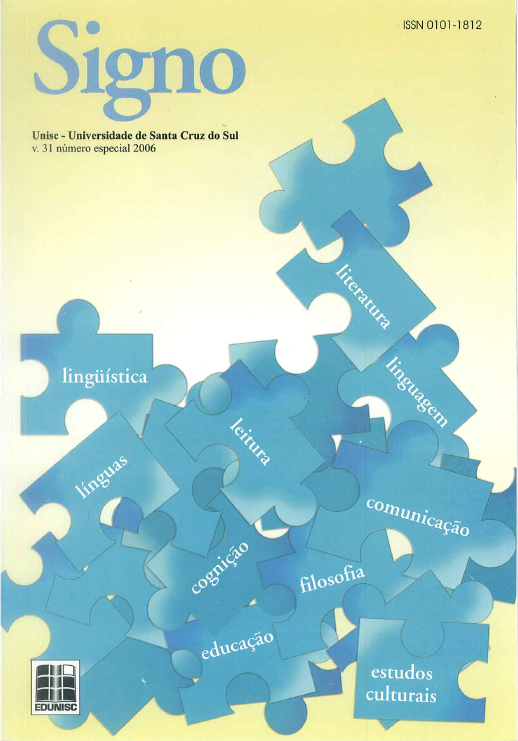Reading comprehension as a cognitive process
DOI:
https://doi.org/10.17058/signo.v31i0.441Abstract
Starting from the presumption that one of the aims of reading is comprehension, reflections will be developed about the following questions: What our body/ brain does when we read? How does the relationship between reading and comprehension work? Is it possible to evaluate reading comprehension? The Belgian surrealistic painter René Magritte (1898-1967), in the work entitled “Ceci n´est pas une pipe”, illustrates in a brilliant way the cognitive phenomenon characteristic of the human species: the symbolic capability, i.e., the capability of constructing and recovering meanings from a set of symbols or signs. The representation of a pipe in Magritte´s work carries us immediately to the pipe object, as does the printed word “pipe”. What cognitive processes are playing a role and allows the proficient reader, while reading, not to see the individual letters, but the words, or even better, the meaning of the words? Is this symbolic capability present in its entirety from birth? If not, how does it develop? All those questions guided our participation in the conference session “Reading and Cognition”.Downloads
Download data is not yet available.
Downloads
Published
2008-08-08
How to Cite
Gabriel, R. (2008). Reading comprehension as a cognitive process. Signo, 31. https://doi.org/10.17058/signo.v31i0.441
Issue
Section
Articles
License
Authors publishing with Signo retain the copyright to their work, licensing it under the Creative Commons Attribution License which allows articles to be re-used and re-distributed without restriction, as long as the original work is correctly cited. Signo is owned by Associação Pró-Ensino em Santa Cruz do Sul and also hosts the Open Journal System plataform. Creative Commons Atribuição 4.0 Internacional.


